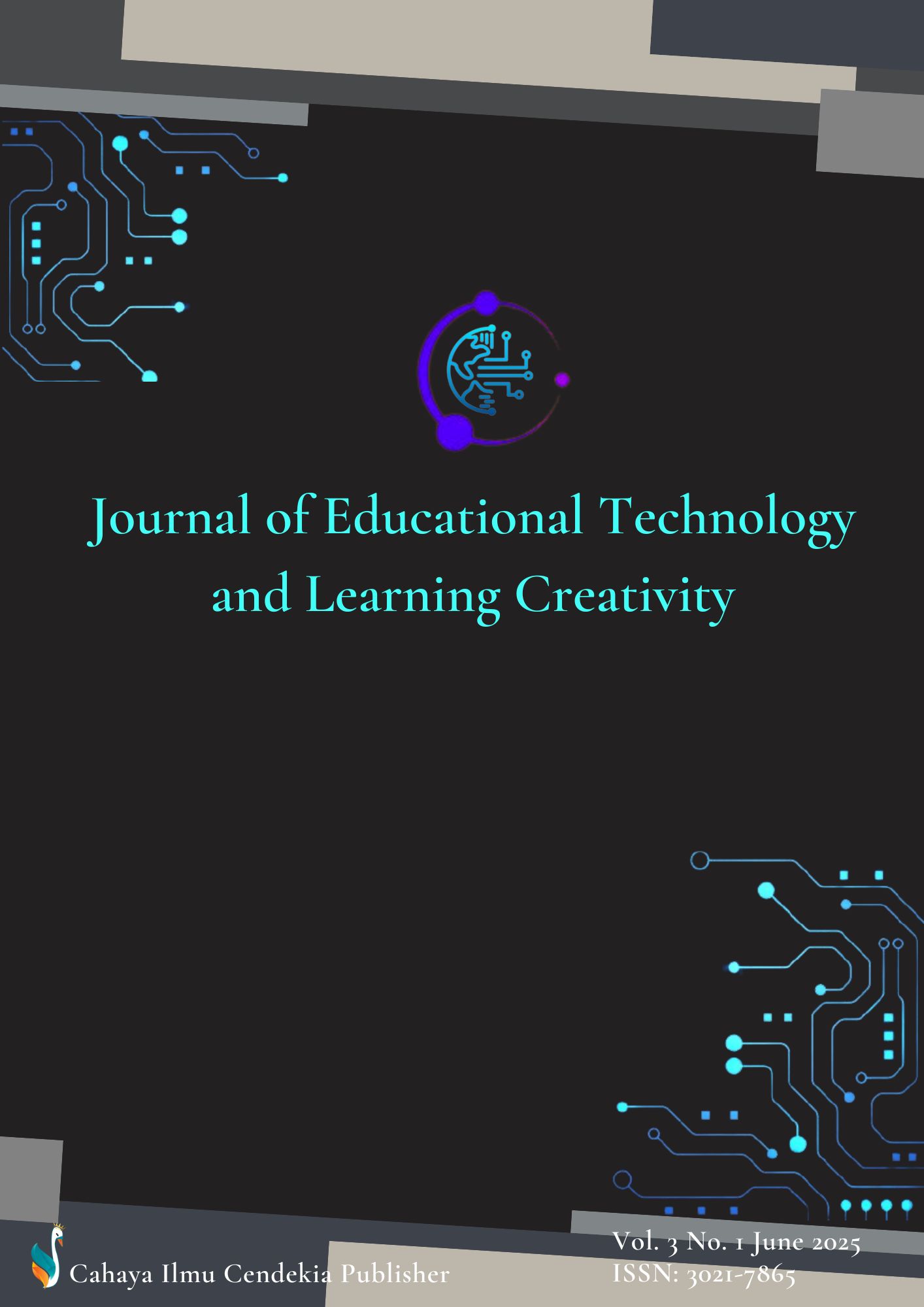The Influence of Education Using Animated Videos on Dental and Oral Health Behavior in Elementary School Children
Abstract
Purpose of the study: The purpose of this study was to determine the effect of animated video education on dental and oral health behavior in elementary school-aged children.
Methodology: This type of research is quantitative with quasi-experimental one group pretest-posttest design. The population is all students of grades 1-6 SDN 1 Tunggulrejo totaling 66 people, a sample of 57 is obtained using the Probability sampling method with proportional random sampling technique. The independent variable is education using animated videos. The dependent variable is dental and oral health behavior. Data collection using a dental and oral health behavior questionnaire. Data analysis with editing, coding, scoring, and tabulating, tested using the Wilcoxon test.
Main Findings: The study found that prior to the intervention, 50.9% of students demonstrated poor dental and oral health behavior. After being given animated video education, 94.7% of students showed good behavior. The Wilcoxon test results indicate a significant improvement with a p-value of 0.000 (p < 0.05), confirming that animated video education had a statistically significant positive effect on students’ health behavior.
Novelty/Originality of this study: The novelty of this study lies in the use of animated videos as interactive educational media that are more effective than conventional methods in improving children's dental and oral health behavior. With a narrative visual approach that is appropriate to cognitive development, this study contributes to technology-based health education strategies in schools and families.
References
K. Alfiyah and W. Warli, “An ethnomathematics study at Palang fish auction site,” Indones. J. Sci. Math. Educ., vol. 7, no. 2, p. 373, 2024, doi: 10.24042/ijsme.v7i2.19169.
U. Umbara, W. Wahyudin, and S. Prabawanto, “Exploring Ethnomathematics with Ethnomodeling Methodological Approach: How Does Cigugur Indigenous People Using Calculations to Determine Good Day to Build Houses,” Eurasia J. Math. Sci. Technol. Educ., vol. 17, no. 2, pp. 1–19, 2021, doi: 10.29333/EJMSTE/9673.
E. S. Elinda Budinarianti, “Pembelajaran IPA berbasis socioscientific issue global warming untuk meningkatkan argumentasi siswa SMP,” BIOCHEPHY J. Sci. Educ., vol. 4, no. 2, pp. 585–591, 2024, doi: 10.52562/biochephy.v4i2.1211.
F. Marbun, “Adaptation Strategies of Traditional Fishermen in Sutera Sub-District, Pesisir Selatan Regency on Climate Change,” J. Ilmu Sos. Mamangan, vol. 9, no. 1, pp. 1–16, 2020, doi: 10.22202/mamangan.v9i1.3394.
V. U. Pratiwi, Andayani, R. Winarni, and A. Anindyarini, “Digital Storybook to Transform Character Education of Local Wisdom Figures for Elementary School Students,” J. Soc. Stud. Educ. Res., vol. 13, no. 4, pp. 250–264, 2022, doi: 10.23887/jpp.v54i1.
J. Filgona, J. Sakiyo, D. M. Gwany, and A. U. Okoronka, “Motivation in learning,” Asian J. Educ. Soc. Stud., vol. 10, no. 4, pp. 16–37, 2020, doi: 10.9734/ajess/2020/v10i430273.
A. G. Prawiyogi, R. Dwimarwati, S. Afryanto, Y. N. DS, and A. S. Asmara, “Bloom’s taxonomy theory in the pedagogical value of domyak art: An ethnopedagogical perspective,” J. Innov. Educ. Cult. Res., vol. 4, no. 2, pp. 311–318, 2023, doi: 10.46843/jiecr.v4i2.576.
H. J. Pentury, A. D. Anggraeni, and D. Pratama, “Improving students’ 21st century skills through creative writing as a creative media,” Deiksis, vol. 12, no. 02, p. 164, 2020, doi: 10.30998/deiksis.v12i02.5184.
J. W. Lee, K. J. Jung, and Y. J. Kim, “Numerical analysis on performance of induced gas flotation machine using MUSIG model,” Eng. Appl. Comput. Fluid Mech., vol. 14, no. 1, pp. 778–789, 2020, doi: 10.1080/19942060.2020.1771426.
M. I. Idika and M. P. Oluwaseyi, “The impact of puzzle game and video-based puzzle strategies on students’ achievement and retention in periodicity,” J. Math. Sci. Teach., vol. 4, no. 2, p. em061, 2024, doi: 10.29333/mathsciteacher/14366.
Anita, Afandi, A. B. Tenriawaru, and D. A. Putra, “Profile of argumentation skills using toulmin’s argumentation pattern (TAP) in senior high school students in biology learning: preliminary research,” J. Phys. Conf. Ser., vol. 1842, no. 1, 2021, doi: 10.1088/1742-6596/1842/1/012065.
R. Amalia, M. A. Ulin Nuha, and A. K. Nashoih, “Development of kosbarab learning media to improve Arabic vocabulary mastery of elementary level students based on android construct 2,” Al-Ta’rib J. Ilm. Progr. Stud. Pendidik. Bhs. Arab IAIN Palangka Raya, vol. 10, no. 2, pp. 145–158, 2022, doi: 10.23971/altarib.v10i2.4529.
S. Fadia Nabila, J. Sakmal, E. Dallion, and P. FIP Universitas Negeri Jakarta, “Pengembangan Media Animasi Berbasis Canva Untuk Meningkatkan Keterampilan Menulis Teks Narasi Siswa Kelas V Sd (Studi Literatur),” Pendas J. Ilm. Pendidik. Dasar, vol. 9, no. 2, pp. 1–14, 2024.
J. Alman and V. V. Williams, “A refined laser method and faster matrix multiplication,” Proc. Annu. ACM-SIAM Symp. Discret. Algorithms, vol. 3, no. 21, pp. 522–539, 2021, doi: 10.46298/theoretics.24.21.
M. Michie Batchelor, “Comparing the Indonesian Kurikulum 2013 with the Australian Curriculum: Focusing on science for junior secondary schools,” Int. Educ. J. Comp. Perspect., vol. 16, no. 2, pp. 83–96, 2017, doi: 10.18326/rgt.v8i1.1-18.
K. G. van Leeuwen et al., “Cost-effectiveness of artificial intelligence aided vessel occlusion detection in acute stroke: an early health technology assessment,” Insights Imaging, vol. 12, no. 1, 2021, doi: 10.1186/s13244-021-01077-4.
C. Castillo, A. L. Alfonso, J. J. Dapueto, N. Camejo, and M. Silva, “Inclusion of information technology-based assessments of health-related quality of life in routine oncology practice in Uruguay,” J. Patient-Reported Outcomes, vol. 6, no. 1, 2022, doi: 10.1186/s41687-022-00458-7.
R. A. Mashami, S. Suryati, B. M. Harisanti, and Y. Khery, “Identification of local wisdom of the sasak tribe in chemistry learning as an effort to strengthen student character,” J. Penelit. Pendidik. IPA, vol. 9, no. 1, pp. 337–345, 2023, doi: 10.29303/jppipa.v9i1.2434.
V. A.-G. 3 and A. S.-R. Jesús Rodríguez Rodríguez 1, Denébola Álvarez-Seoane 2, “Textbooks and Learning Materials in Physical Education in the International Context : Literature Review,” Int. J. Environ. Res. Public Health, vol. 19, no. 12, pp. 2–14, 2022, doi: 10.3390/ijerph19127206.
K. P. Alexander Yudha Abimantara, Feliza Paramitha Sinaga, “The influence of digital literacy on students problem solving ability in physics subjects,” EduFisika J. Pendidik. Fis., vol. 09, no. 2, pp. 466–477, 2024, doi: 10.59052/edufisika.v.
E. Sholihatin, “An analysis of illocutionary and perlocutionary speech act in defamation texts,” J. Lang. Lang. Teach., vol. 7, no. 1, p. 49, 2020, doi: 10.33394/jollt.v7i1.1438.
W. G. M. Waman, Suryaningsi, “Cypriot Journal of Educational,” Cypriot J. Educ., vol. 2, no. 3, pp. 61–74, 2011, doi: 10.18844/cjes.v16i3.5770 Received.
M. Popova and T. Jones, “Chemistry instructors’ intentions toward developing, teaching, and assessing student representational competence skills,” Chem. Educ. Res. Pract., vol. 22, no. 3, pp. 733–748, 2021, doi: 10.1039/d0rp00329h.
N. H. Jainal and M. Shahrill, “Incorporating Jigsaw Strategy to Support Students’ Learning through Action Research,” Int. J. Soc. Educ. Sci., vol. 3, no. 2, pp. 252–266, 2021, doi: 10.46328/ijonses.75.
M. Artasia, H. Hartono, and D. Da Ary, “Ethno pedagogy and conservation practices of the erai-erai dance in the Lematang Malay Community, Lahat District, South Sumatra Indonesia,” Int. J. Vis. Perform. Arts, vol. 4, no. 2, pp. 193–200, 2022, doi: 10.31763/viperarts.v4i2.899.
M. Fadilurrahman, T. Kurniawan, and S. Shaddiq, “Systematic Literature Review of Disruption Era in Indonesia : The Resistance of Industrial Revolution 4 . 0,” J. Robot. Control, vol. 2, no. 1, 2021, doi: 10.18196/jrc.2152.
N. Hasnunidah, E. Dwiyanti, B. Yolida, N. Meriza, and D. Maulina, “Optimizing discovery learning to enhance HOTS : Why use argumentative worksheets ?,” J. Penelit. Pendidkan IPA, vol. 10, no. 12, pp. 10348–10358, 2024, doi: 10.29303/jppipa.v10i12.9412.
A. H. Sulha, A. K. Famela, and A. T. A. Harahap, “The Implementation of synchronous and asynchronous learning in english as foreign language setting,” ETDC Indones. J. Res. Educ. Rev., vol. 1, no. 1, pp. 17–27, 2021, doi: 10.51574/ijrer.v1i1.50.
J. T. Hancock and T. M. Khoshgoftaar, “CatBoost for big data: an interdisciplinary review,” J. Big Data, vol. 7, no. 1, 2020, doi: 10.1186/s40537-020-00369-8.
R. R. de Mendonça, D. F. de Brito, F. de Franco Rosa, J. C. dos Reis, and R. Bonacin, “A framework for detecting intentions of criminal acts in social media: A case study on twitter,” Inf., vol. 11, no. 3, pp. 1–40, 2020, doi: 10.3390/info11030154.
Umar Seno, Sabar Narimo, Djalal Fuadi, Minsih, and Choiriyah Widyasari, “Implementation of Local Wisdom Based Learning in Realizing Pancasila Student Profiles in Elementary Schools,” J. Ilm. Sekol. Dasar, vol. 6, no. 4, pp. 652–660, 2022, doi: 10.23887/jisd.v6i4.56041.
C. A. Monteiro, G. Cannon, J. C. Moubarac, R. B. Levy, M. L. C. Louzada, and P. C. Jaime, “The un decade of nutrition, the NOVA food classification and the trouble with ultra-processing,” Public Health Nutr., vol. 21, no. 1, pp. 5–17, 2018, doi: 10.1017/S1368980017000234.
R. Sugianto, Y. M. Cholily, R. Darmayanti, K. Rahmah, and N. Hasanah, “Development of Rainbow Mathematics Card in TGT Learning For Increasing Mathematics Communication Ability,” Kreano, J. Mat. Kreat., vol. 13, no. 2, pp. 221–233, 2022, doi: 10.15294/kreano.v13i2.38068.
M. I. Syam, F. A. Falemu, and M. B. Hussain, “Integration of Qur ’ anic and Hadith values in evolution learning : Innovation of biology modules based on faith education,” J. Acad. Biol. Biol. Educ., vol. 1, no. 2, pp. 66–74, 2024, doi: 10.37251/jouabe.v1i2.1143.
C. P. Bhakti and N. E. Safitri, “Peran Bimbingan Dan Konseling Untuk Menghadapi Generasi Z Dalam Perspektif Bimbingan Dan Konseling Perkembangan,” Konseling GUSJIGANG, vol. 3, no. 1, p. 10, 2017, [Online]. Available: jurnal.umk.ac.id/index.php/gusjigang/article/download/1602/1072
N. N. Sinulingga, “Implementasi pembelajaran pendidikan agama islam berbasis media kartun islami dalam membina akhlak siswa di sekolah dasar,” J. Bilqolam Pendidik., vol. Vol. 3, no. 2, pp. 21–40, 2022, doi: 10.51672/jbpi.v3i2.101.
K. Lenggogeni and M. Mawardi, “Effectiveness of a flipped classroom based on guided inquiry learning system on acid-base solutions,” J. Penelit. Pendidik. IPA, vol. 8, no. 4, pp. 2168–2175, 2022, doi: 10.29303/jppipa.v8i4.1909.
N. Stacey et al., “Enhancing coastal livelihoods in Indonesia: an evaluation of recent initiatives on gender, women and sustainable livelihoods in small-scale fisheries,” Marit. Stud., vol. 18, no. 3, pp. 359–371, 2019, doi: 10.1007/s40152-019-00142-5.
S. Y. Ningsih and N. Mahyuddin, “Desain E-Module Tematik Berbasis Kesantunan Berbahasa Anak Usia Dini di Taman Kanak-Kanak,” J. Obs. J. Pendidik. Anak Usia Dini, vol. 6, no. 1, pp. 137–149, 2021, doi: 10.31004/obsesi.v6i1.1217.
K. A. Hermawati, “Implementasi model inkuiri dalam pembelajaran pendidikan agama islam dan budi pekerti: Analisis pada materi pembelajaran toleransi,” J. Pendidik. Agama Islam Al-Thariqah, vol. 6, no. 1, pp. 56–72, 2021, doi: 10.25299/al-thariqah.2021.vol6(1).6159.
R. F. Roslina, Herpratiwi, “Interactive multimedia based on problem-based learning to improve students concept understanding in physics subject,” J. Teknol. Pendidik., vol. 8, no. 2, pp. 41–54, 2015, doi: 10.24114/jtp.v8i2.3329.
D. N. Bay, “Investigation of the relationship between self-efficacy belief and classroom management skills of preschool teachers with other variables,” Int. Electron. J. Elem. Educ., vol. 12, no. 4, pp. 335–348, 2020, doi: 10.26822/iejee.2020459463.
N. Aliah, “Analysis Of The Indonesian Speakers Of English Employ The Indonesian Language Syntactically,” vol. 1, no. 4, pp. 198–206, 2023, doi: 10.61132/bima.v1i4.326.
D. Suri and D. Chandra, “Teacher’s strategy for implementing multiculturalism education based on local cultural values and character building for early childhood education,” J. Ethn. Cult. Stud., vol. 8, no. 4, pp. 271–285, 2021, doi: 10.29333/ejecs/937.
A. J. Venables, “Using natural resources for development: Why has it proven so difficult?,” J. Econ. Perspect., vol. 30, no. 1, pp. 161–184, 2016, doi: 10.1257/jep.30.1.161.
R. Navarro, E. Larrañaga, S. Yubero, and B. Víllora, “Families, Parenting and Aggressive Preschoolers: A Scoping Review of Studies Examining Family Variables Related to Preschool Aggression,” Int. J. Environ. Res. Public Health, vol. 19, no. 23, 2022, doi: 10.3390/ijerph192315556.
S. Astafrina, H. Hadiyanto, N. A. Alwi, and Y. Fitria, “Penggunaan video animasi untuk meningkatkan keterampilan menyimak dan hasil belajar peserta didik pada pembelajaran tematik sekolah dasar,” J. Basicedu, vol. 6, no. 5, pp. 8754–8765, 2022, doi: 10.31004/basicedu.v6i5.3940.
J. G. A. Guzmán, V. Florinski, G. Tóth, S. Sharma, B. van der Holst, and M. Opher, “Numerical modeling of energetic charged-particle transport with SPECTRUM Software: general approach and artificial effects due to eield discretization,” Astrophys. J. Suppl. Ser., vol. 272, no. 2, p. 46, 2024, doi: 10.3847/1538-4365/ad4637.
N. Zulni, R. Sartika, and E. Septia, “Hubungan Minat Baca Dengan Kemampuan Menulis Teks Anekdot Siswa Kelas X Sma Pembangunan Laboratorium Unp,” J. Pendidik. dan Pembelajaran Bhs. Indones., vol. 11, no. 1, pp. 54–63, 2022, doi: 10.23887/jurnal_bahasa.v11i1.998.
Harsia, “Jurnal Pendidikan, Pengajaran Bahasa dan Sastra ONOMA PBSI FKIP Universitas,” J. pendidikan, pengajaran Bhs. dan sastra Onoma PBSI FKIP, pp. 1–128, 2014.
L. D. Tien, D. K. Vig, A. Mahajan, and M. H. Tsai, “Analysis of health technology solutions for perioperative care,” JCA Adv., vol. 2, no. 2, p. 100118, 2025, doi: 10.1016/j.jcadva.2025.100118.
D. Mizrahi et al., “Digital health technology use among people aged 55 years and over: Findings from the 45 and up study,” Int. J. Med. Inform., vol. 200, no. November 2024, p. 105911, 2025, doi: 10.1016/j.ijmedinf.2025.105911.
S. Phommachanh et al., “Situation analysis of evidence-informed health decision-making in Lao PDR: the case of health technology assessment,” Lancet Reg. Heal. - West. Pacific, vol. 57, p. 101534, 2025, doi: 10.1016/j.lanwpc.2025.101534.
D. J. Kuss, “Online harms: Problematic technology use is a public health concern and requires a multistakeholder approach,” Addict. Behav. Reports, vol. 21, no. March, p. 100602, 2025, doi: 10.1016/j.abrep.2025.100602.
S. Botwright et al., “Good Practices for Health Technology Assessment Guideline Development: A Report of the Health Technology Assessment International, HTAsiaLink, and ISPOR Special Task Force,” Value Heal., vol. 28, no. 1, pp. 1–15, 2025, doi: 10.1016/j.jval.2024.09.001.
H. M. Abdulazeem, R. Meckawy, S. Schwarz, and S. J. Klug, “Knowledge , attitude , and practice of primary care physicians toward clinical AI-assisted digital health technologies : Systematic review and meta-analysis,” Int. J. Med. Inform., p. 105945, 2025, doi: 10.1016/j.ijmedinf.2025.105945.
A. Prakash, Pempa, T. Duba, K. C. Sarin, S. V. Dabak, and U. Tashi, “Advancing evidence-based decision-making in Bhutan: development of a health technology assessment framework,” Lancet Reg. Heal. - Southeast Asia, vol. 30, no. iii, p. 100489, 2024, doi: 10.1016/j.lansea.2024.100489.
R. Khan, S. Khan, H. M. Almohaimeed, A. I. Almars, and B. Pari, “Utilization, challenges, and training needs of digital health technologies: Perspectives from healthcare professionals,” Int. J. Med. Inform., vol. 197, no. September 2024, p. 105833, 2025, doi: 10.1016/j.ijmedinf.2025.105833.
L. Mou et al., “Early health technology assessment of tongue swab for non-sputum based pulmonary tuberculosis diagnosis in Thailand,” Lancet Reg. Heal. - Southeast Asia, vol. 33, p. 100533, 2025, doi: 10.1016/j.lansea.2025.100533.
L. M. Gonçalves Franco, A. G. De Oliveira, P. D. R. Silva, and A. Zucchi, “Information Technology, Public Management Effectiveness Index and Health Expenditures: A Study with Municipalities in the State of Parana,” Procedia Comput. Sci., vol. 256, pp. 1302–1309, 2025, doi: 10.1016/j.procs.2025.02.242.
Copyright (c) 2025 Stella Eka Sari, Hira Farhan, Ebenezer Gyamera, Marivic D. Paghubasan

This work is licensed under a Creative Commons Attribution 4.0 International License.
Authors who publish with this journal agree to the following terms:
- Authors retain copyright and acknowledge that the Journal of Educational Technology and Learning Creativity is the first publisher licensed under a Creative Commons Attribution 4.0 International License.
- Authors are able to enter into separate, additional contractual arrangements for the non-exclusive distribution of the journal's published version of the work (e.g., post it to an institutional repository or publish it in a book), with an acknowledgment of its initial publication in this journal.
- Authors are permitted and encouraged to post their work online (e.g., in institutional repositories or on their website) prior to and during the submission process, as it can lead to productive exchanges and earlier and greater citation of published work.


.png)


.png)
.png)
.png)












